Bigorra
No new piece with funny moves or powers here. No, because the goal is just the opposite. I wanted to create a variant where all the pieces I use elsewhere are fighting. Then, there are all pieces from Terachess (II), completed by the pieces from Fantastic XIII. Bigorra represents an alternative to Terachess II, somehow more complex because it has more pieces from more different types.
In Bigorra, the stronger pieces (Queen, Lion, Eagle, Buffalo, Duchess, etc.) are single as in Shako, Metamachy, Pemba, Zanzibar-XXL (Maasai Chess), or Gigachess (II). They do not come in pair as in Terachess.
In addition to a full line of Pawns, there are Soldiers and Trolls which are acting as "improved" Pawns and are balancing the large number of other pieces.
The idea of promotion for some non-Pawn pieces has been kept.
You can play Bigorra with Game Courier here!
Setup
The board is a 16 x 16 checkered squares with a white one at the right end of each player. There are 80 pieces per side, with 34 different types.
Compare to other Cazaux's chess variants, some pieces have changed their names: the Vao's power is represented here by an Archer (instead of a Crocodile). The strong Direwolf jumping anywhere on the 2nd or the 3rd ring around replaces the Saber-tooth. Finally, the Trolls are represented by a piece with an axe.
The pieces are:
- 2 Hawks, 2 Mammoths, 2 Squirrels, 2 Cheetahs, 2 Centaurs, 1 Buffalo, 1 Sorceress, 1 Amazon, 1 Direwolf, 1 Duchess, 1 Rhinoceros on the 1st row
- 2 Cannons, 2 Camels, 2 Giraffes, 2 Archers, 1 Admiral, 1 Cardinal, 1 Lion, 1 King, 1 Queen, 1 Eagle, 1 Marshall, 1 Missionary on the 2nd row
- 2 Elephants, 2 Rooks, 2 Knights, 2 Bishops, 2 Ships, 2 Snakes, 2 Princes, 2 Machines on the 3rd row
- 8 Trolls and 8 Soldiers on the 4th row
- 16 Pawns on the 5th row
The pieces are arranged as on the diagram below.
Initial Setup:

Pieces
The pieces are familiar to the players of the author's games, such as Shako, Tamerlane II, Metamachy, Pemba, Zanzibar-XXL (Maasai Chess), Fantastic XIII, Gigachess (II), Terachess (II).
King: moves 1 step in any orthogonal or diagonal direction to an unattacked square. The King is in check if it is attacked by one or several enemy pieces. It is forbidden to play a move leaving one's King in check.
There is no castling at Bigorra. On its first move, the King may jump to a free square at two squares' distance. For instance, from h2, it can jump to f1, f2, f3, f4, g4, h4, i4, j4, j3, j2 or j1. It does not matter if the square jumped over is occupied or not; however, the jump is forbidden if that intermediate square is threatened by an enemy piece. When jumping like a Knight, at least one of the two intermediate squares must be free of threat (e.g., if jumping from h2 to j3, either i2 or i3 must not be under attack). The King's jump is not permitted if the King is in check. This rule, which was once prevalent in medieval European chess, replaces castling. Identical to Metamachy.
Queen: slides to any square along the file, the rank, or a diagonal on which it stands. Identical to standard chess.
Rook: moves to any square along the file or the rank on which it stands. Identical to standard chess (except there is no castling).
Bishop: slides to any square along a diagonal on which it stands. Identical to standard chess.
Knight: a (2,1) jumper, it jumps to the opposite square of a 2x3 rectangle. No matter what the intermediate square contains. Identical to standard chess.





Pawn: can move straight forward one or two squares from any position on the board, without capturing. It captures one square diagonally forward. Identical to Metamachy.


Soldier: it moves as a super-Pawn. It captures 1-square diagonally forward like a Pawn, but moves with no capture either 1-square forward or sideways (left or right). It can also step two empty squares forward from any position on the board. Otherwise, it is identical to the Pawn (same promotion, en-passant capture rules). The first recorded author to have used it is Hirsch Silberschmidt in his “Kriegspiel” chess variant published in 1826. It is used at Zanzibar-XXL (Maasai Chess).
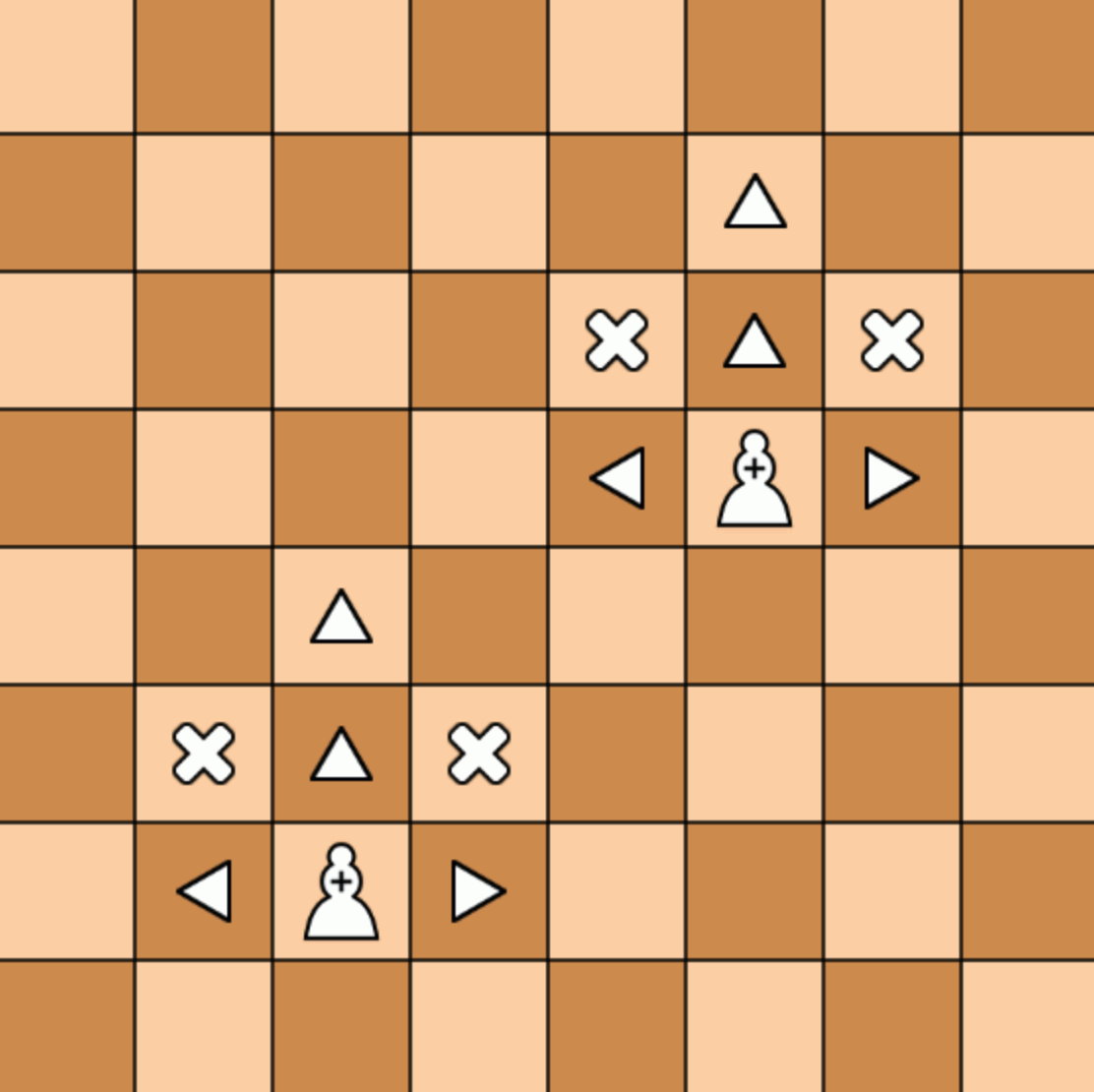

Amazon: it combines the move of Queen and Knight. An old idea, used by Russians instead of the Queen in the 18th century.


Marshall: it combines the move of Rook and Knight. It can be found in many, many chess variants since Carrera, Bird, Capablanca and many others like Grand Chess or Seirawan Chess.


Cardinal: it combines the move of Bishop and Knight. It can be found in many, many chess variants since Carrera, Bird, Capablanca, Modern and many others like Grand Chess or Seirawan Chess.


Admiral: it is another compound piece that moves as a Rook or a non-royal King. That means that it is a Rook that can also step one space diagonally. It corresponds to the Dragon King that is found in Shogi.
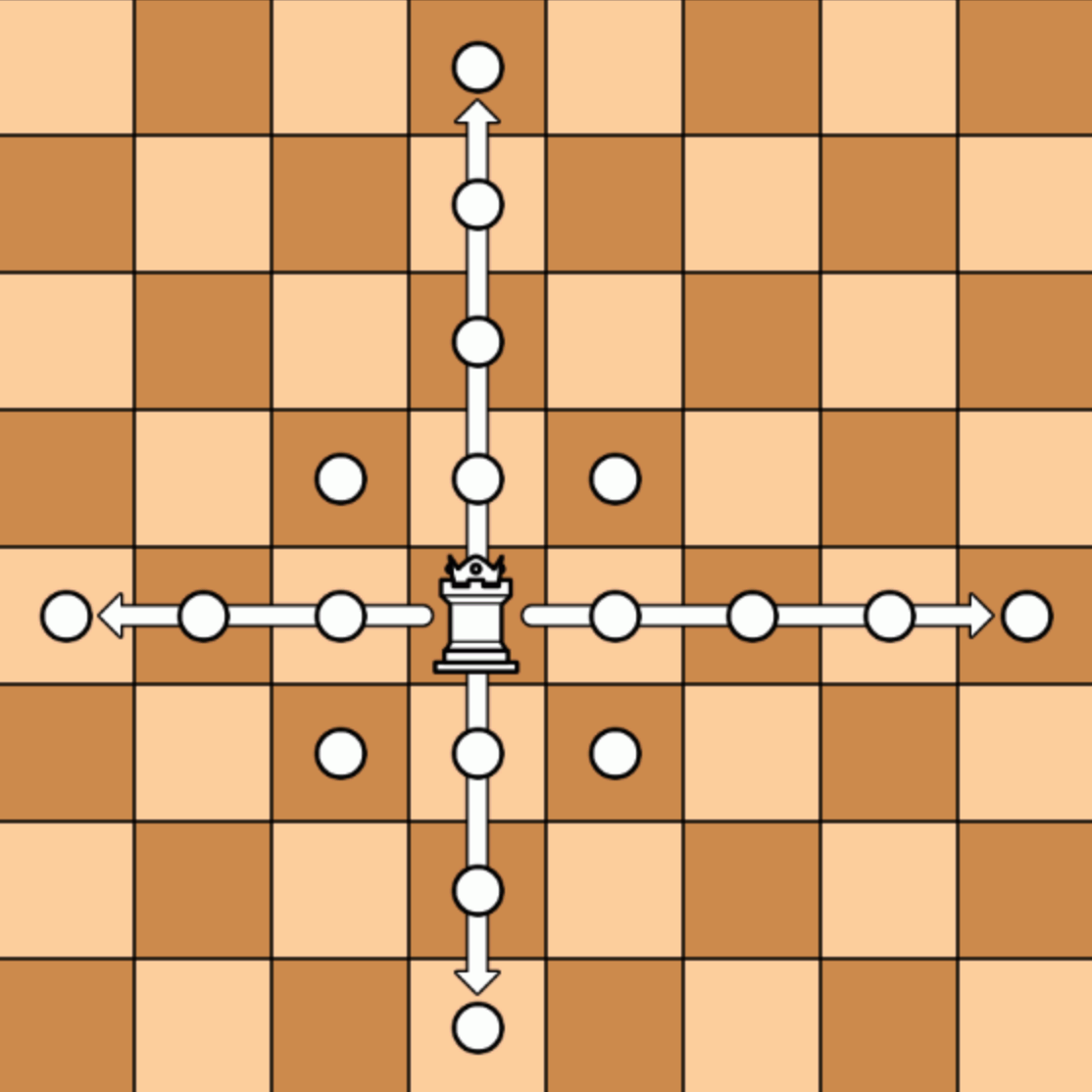

Missionary: it is another compound piece that moves as a Bishop or a non-royal King. That means that it is a Bishop that can also step one space orthogonally. It corresponds to the Dragon Horse that is found in Shogi.
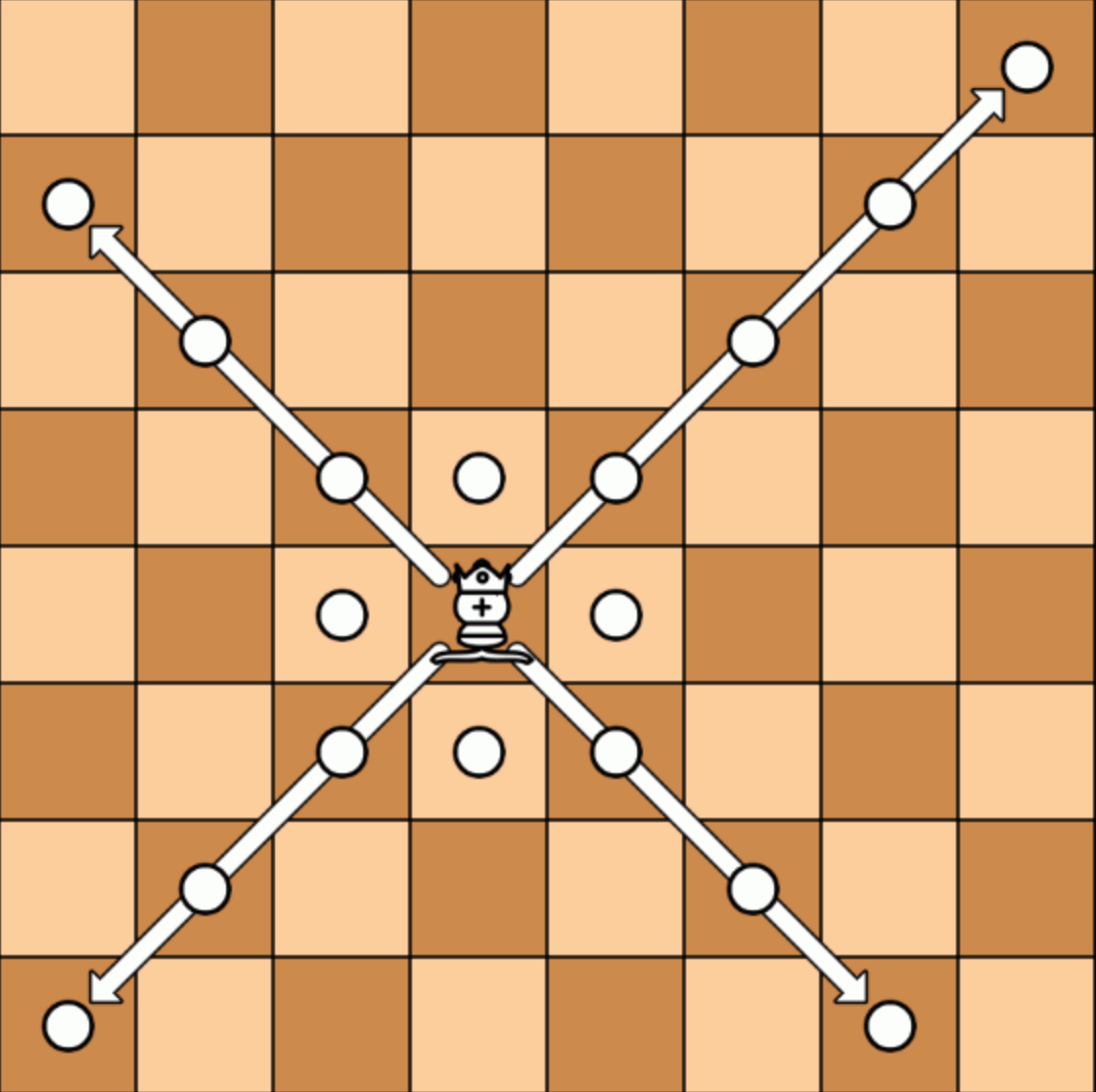

Eagle: moves one square diagonally and then slides away an indefinite number of squares vertically or horizontally. It is authorized to go only one square diagonally. It cannot jump, and the unobstructed path must start with the diagonal movement. This piece is almost as powerful as the Queen and is inspired by the Giraffe from Tamerlane's Chess and the Aanca (a mythical giant bird preying elephants, mistaken for a gryphon) from Alfonso X's Grande Acedrex. Identical to Metamachy. You can call it Gryphon if you prefer.
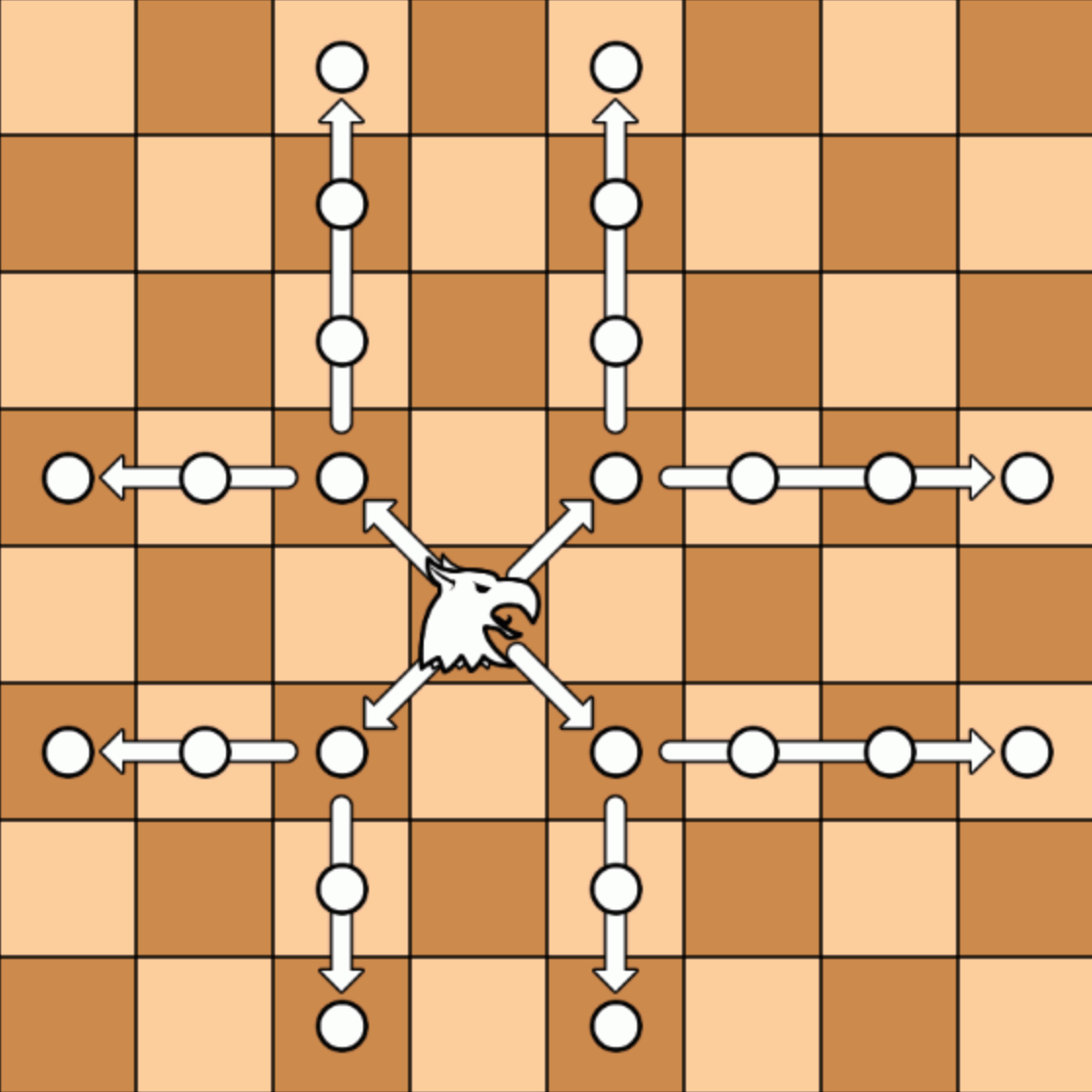

Rhinoceros: moves one square vertically or horizontally and then slides away an indefinite number of squares diagonally. It is authorized to go only one square along its rank or file. It cannot jump, and the unobstructed path must start with the orthogonal movement. This piece is inspired by the Unicorn of medieval Grande Acedrex. It is a counterpart of the Eagle. Also called Manticore.


Lion: moves as a King (a single step move in any direction as Wazir or Ferz), or may jump to a position two squares away, jumping in any orthogonal (Dabbaba) or diagonal (Alfil) directions, or jumping as a Knight. (Inspired by Chu Shogi, the most popular variant of the Japanese Chess, where the Lion has the same range but is more dreadful as it can move twice in a turn). Identical to Metamachy.


Centaur: it is another compound piece that moves as a Knight or a non-royal King.
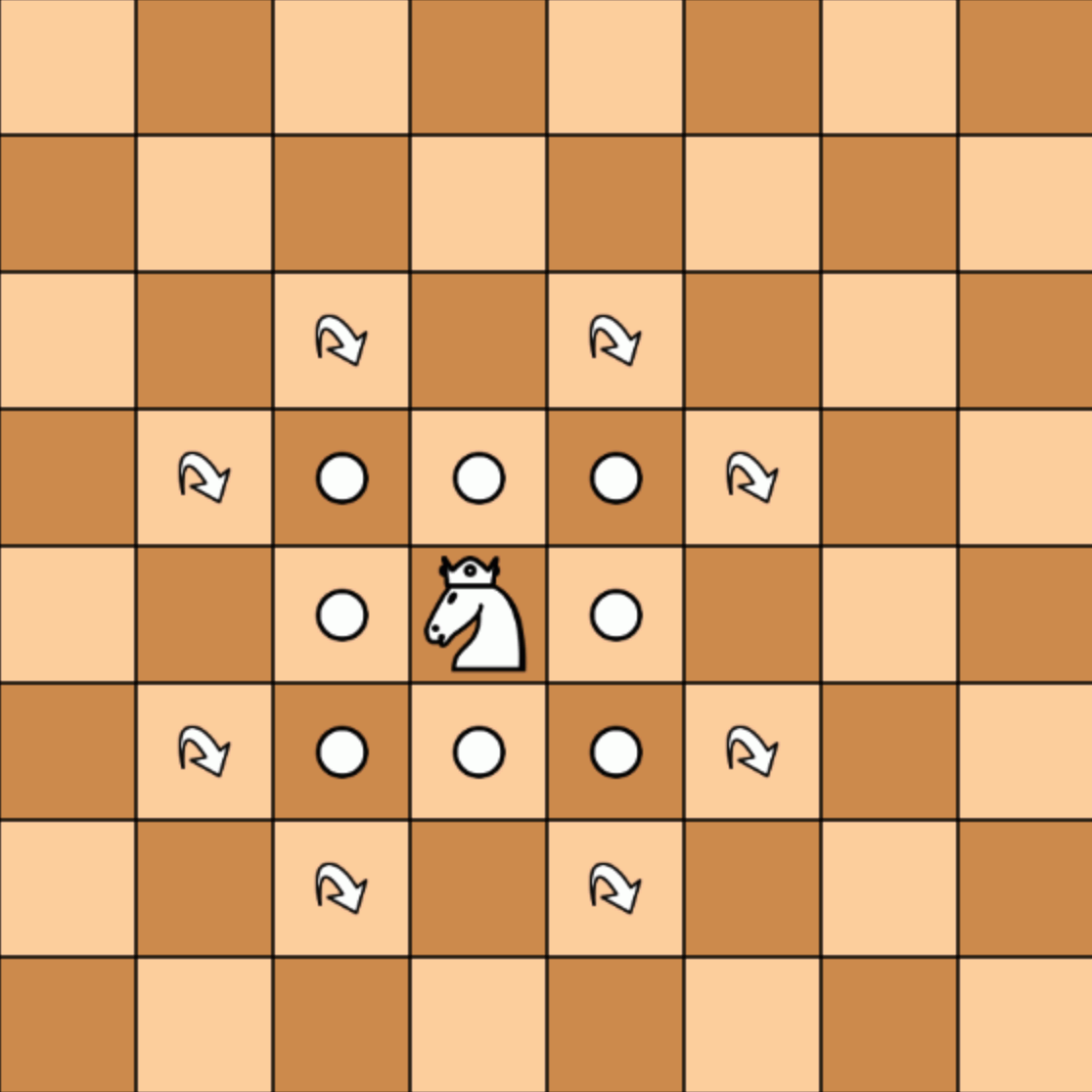
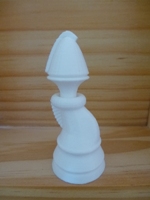
Camel: a (3,1) jumper, it jumps to the opposite square of a 2x4 rectangle, like an extended Knight. No matter what intermediate squares contain. Note that it always stays on the same color of square. A well known piece from medieval Muslim great Chess like Tamerlane's Chess.
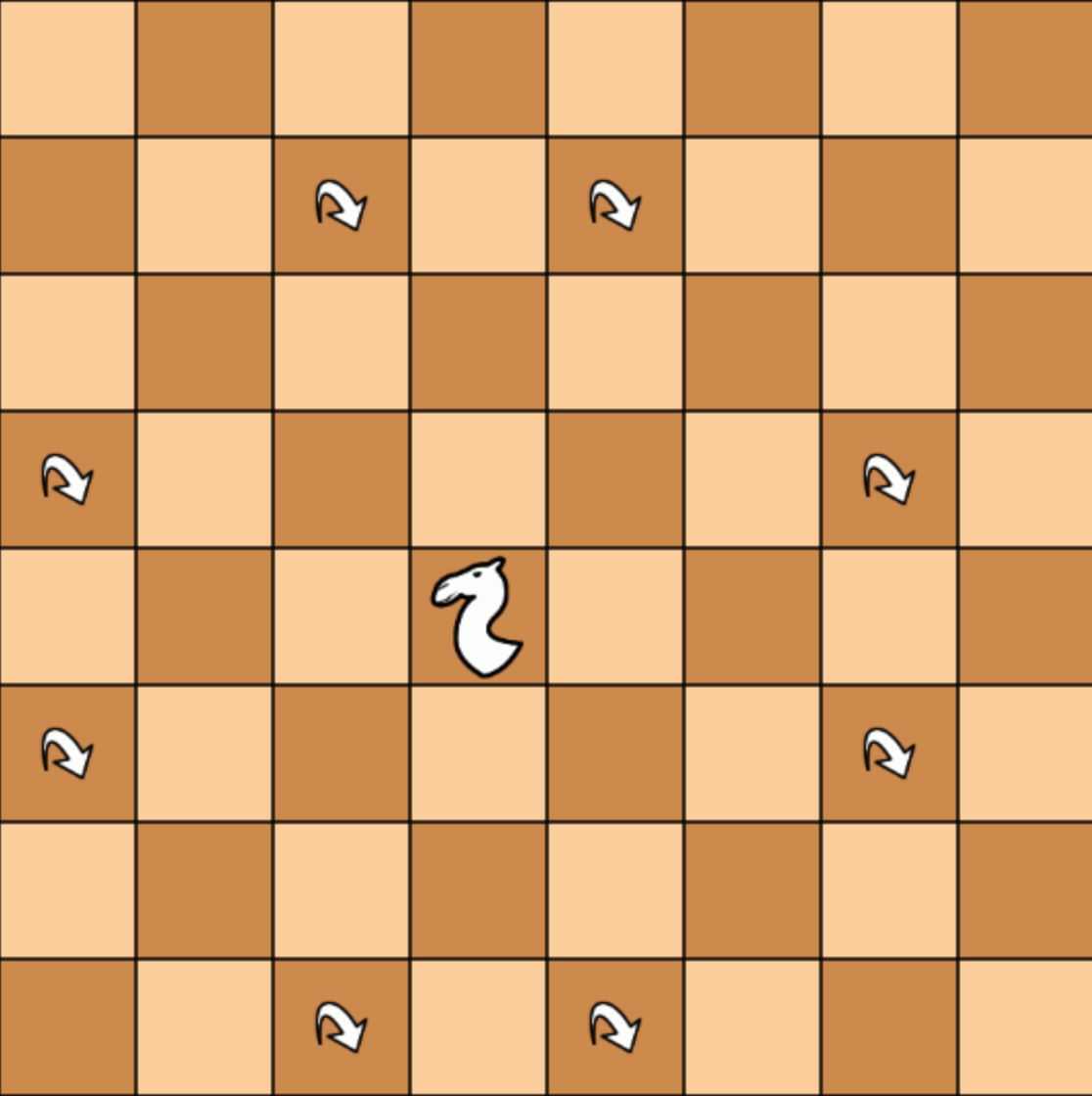

Giraffe: a (3,2) jumper, it jumps to the opposite square of a 3x4 rectangle, like an extended Knight. No matter what intermediate squares contain. Note that it always changes the same color of its square. That piece is found in Alfonso X's Grant Acedrex (but its move has been rendered differently by 20th century historians). The same pattern, but with a non-jumping move, is found in Janggi, Korean Chess, for the Elephant. Under the name of Zebra, it is also a fairy piece used by problemists for compositions.


Buffalo: combines the leaps of the Knight (2,1), the Camel (3,1) and the Giraffe (3,2).

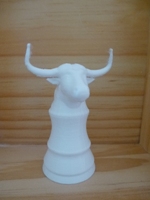
Cannon: exactly as in Xiangqi. The Cannon moves without taking like a Rook, but it takes by going in a straight horizontal or vertical line and jumping over exactly one piece. When a Cannon takes a piece, there must be exactly one piece between the original and final square of the Cannon's move - this piece may be of either color. This is identical to the move of the Cannon in Shako and Metamachy.
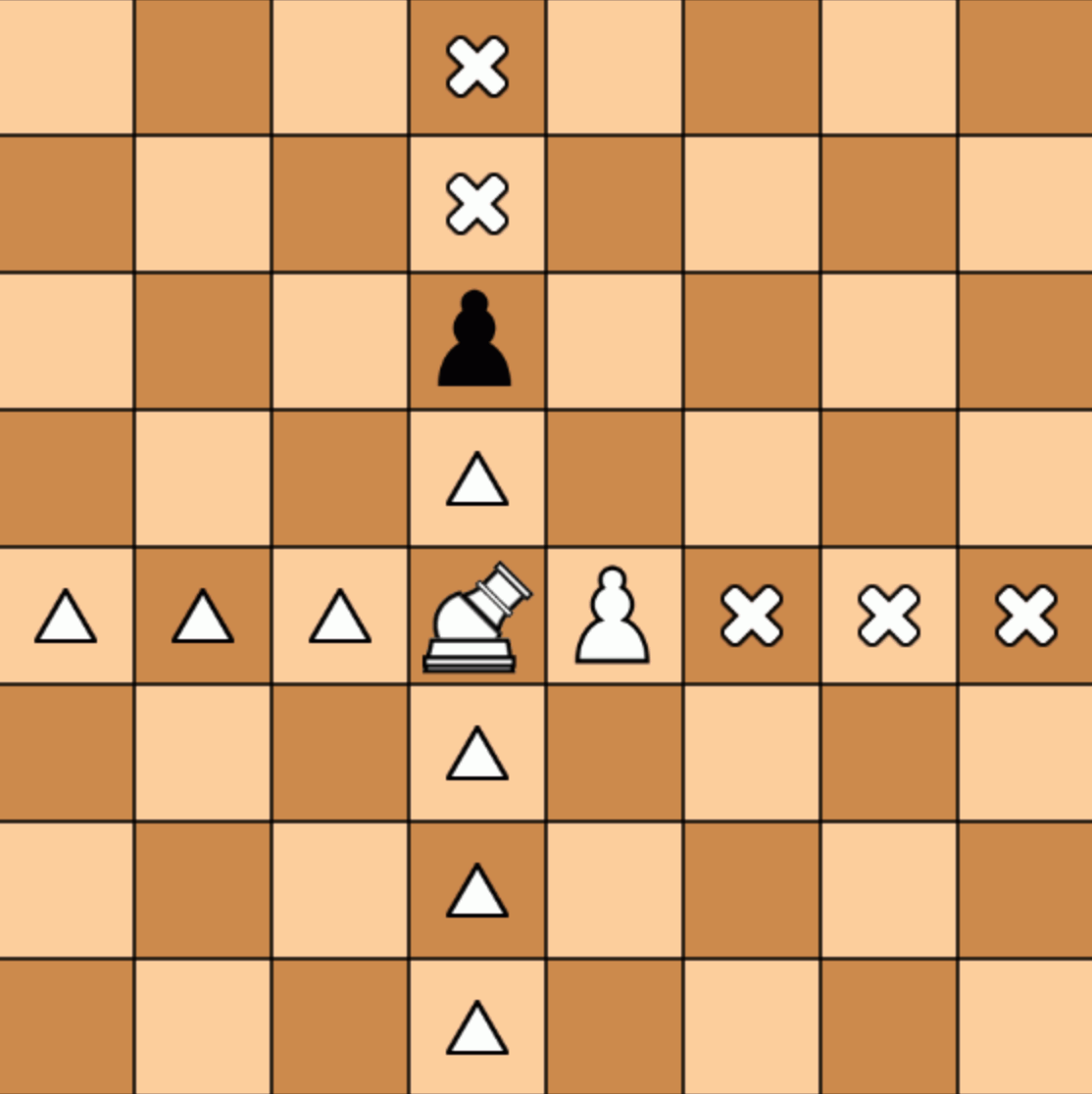

Archer: it is the diagonal counterpart of the Xiangqi's Cannon. It moves like a Bishop and needs an intermediate piece between itself and its victim to capture it. The Archer jumps the intermediate and takes the victim on its square. The intermediate is left unaffected. Also known as Vao by problemists. It may be represented by a Crocodile as in other Cazaux's chess variants.


Machine: it is an orthogonal counterpart of the Elephant as it moves 1 or 2 squares orthogonally, jumping over the first square if it is occupied. Then, it combines the moves of old Dabbaba and Wazir found in ancient Muslim Chess variants. The word Dabbaba designated a siege machine at war in Arabic, hence the name given for this piece.


Elephant: exactly as in Shako and Metamachy. It moves one or two squares diagonally. When an Elephant moves two squares, it doesn't matter what the intermediate square contains. Note that it always stays on the same color of square. The Elephant moves as the combined Alfil and Ferz from Shatranj, two pieces which were also present in mediaeval Chess and have disappeared with the birth of modern moves for the Bishop and the Queen.
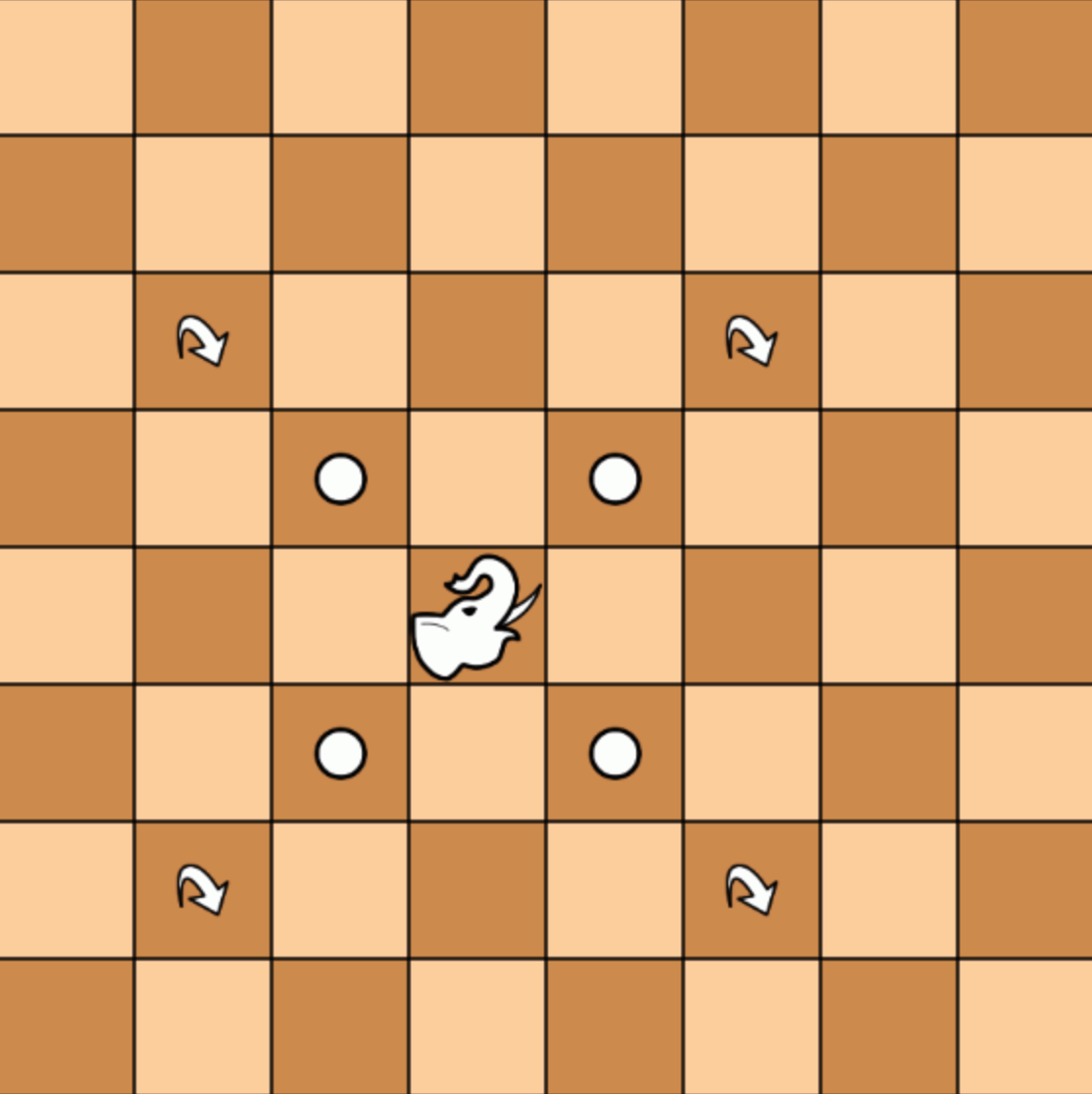

Prince: a non-royal King who moves and captures one square in any direction, but without being hindered by check. It has been inspired by medieval games like the Courier chess, an old chess variant, played in Germany, where it is called "Man". Like the Pawn, it can also move without capturing to the second square straight ahead.
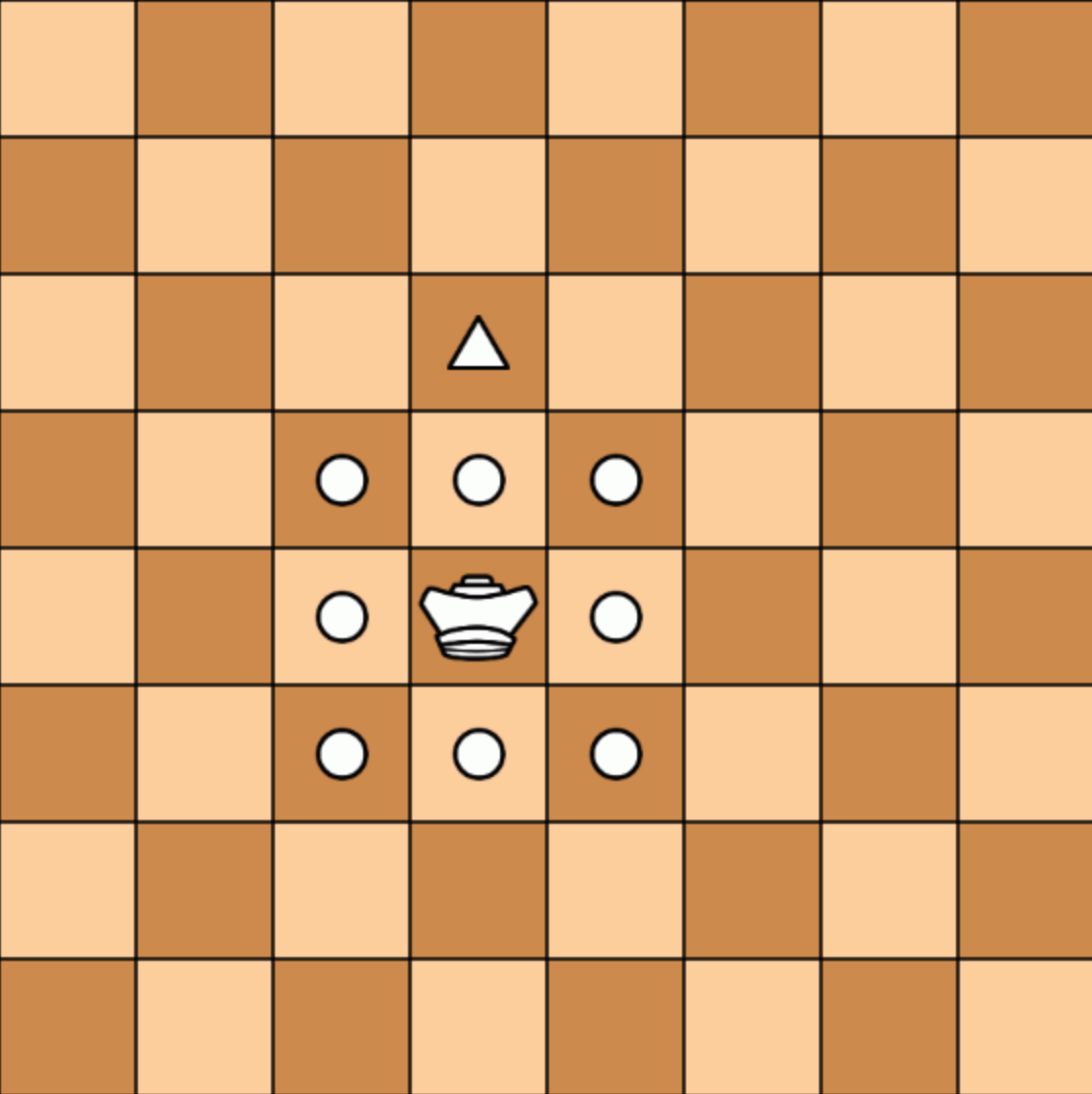

Sorceress: it moves like a Queen and needs an intermediate piece between itself and its victim to capture it. The Sorceress jumps the intermediate and takes the victim on its square. The intermediate is left unaffected. Like the Queen is Bishop + Rook, the Sorceress is Cannon + Crocodile. Called Leo by the problemists, it is used at Zanzibar-XXL (Maasai Chess).
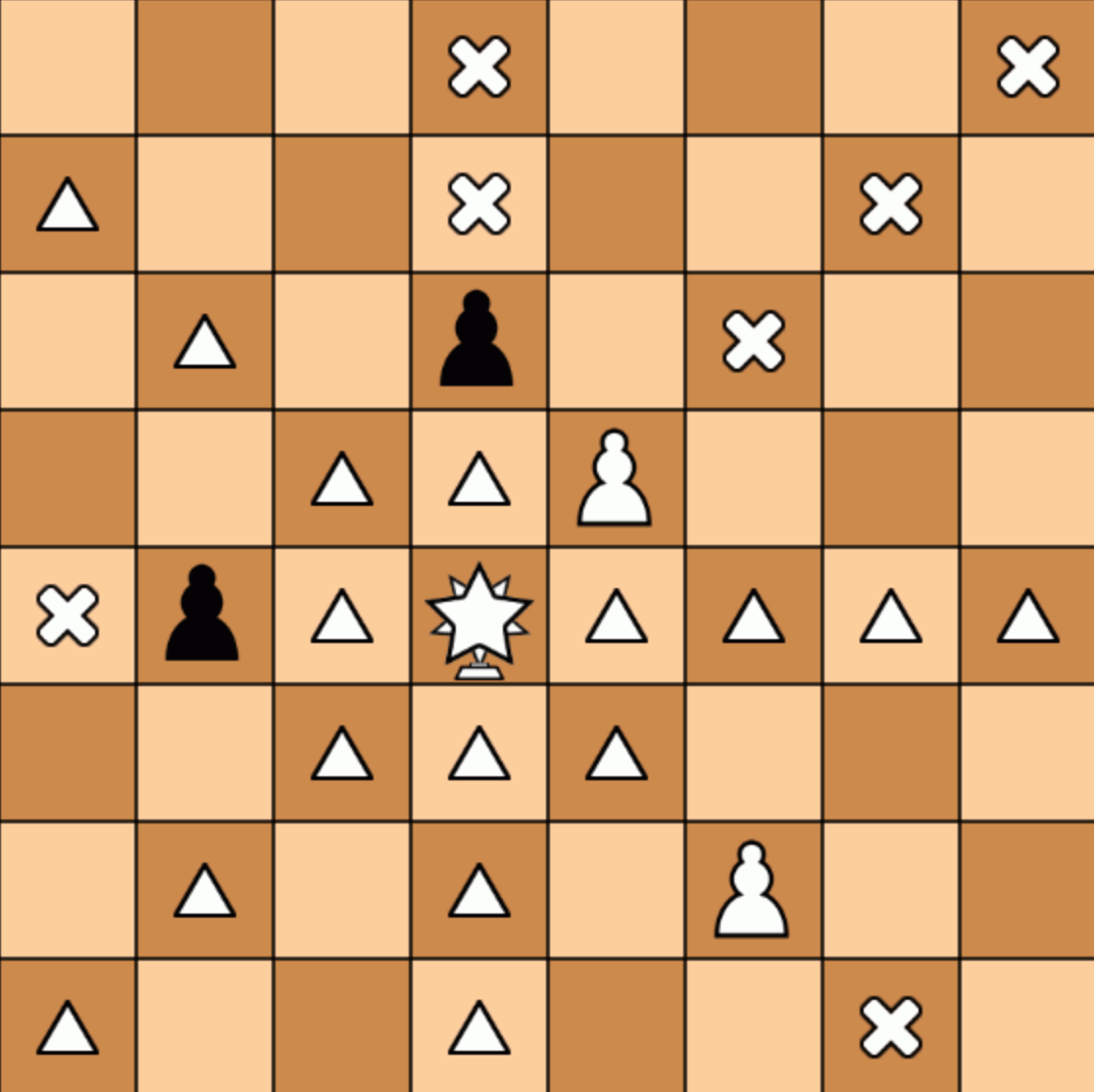

Duchess: it moves as a limited Queen, one, two or three squares in any straight directions. When moving two or three squares, it may jump and it does not matter what any intermediate squares contain. It is used at Zanzibar-XXL (Maasai Chess).
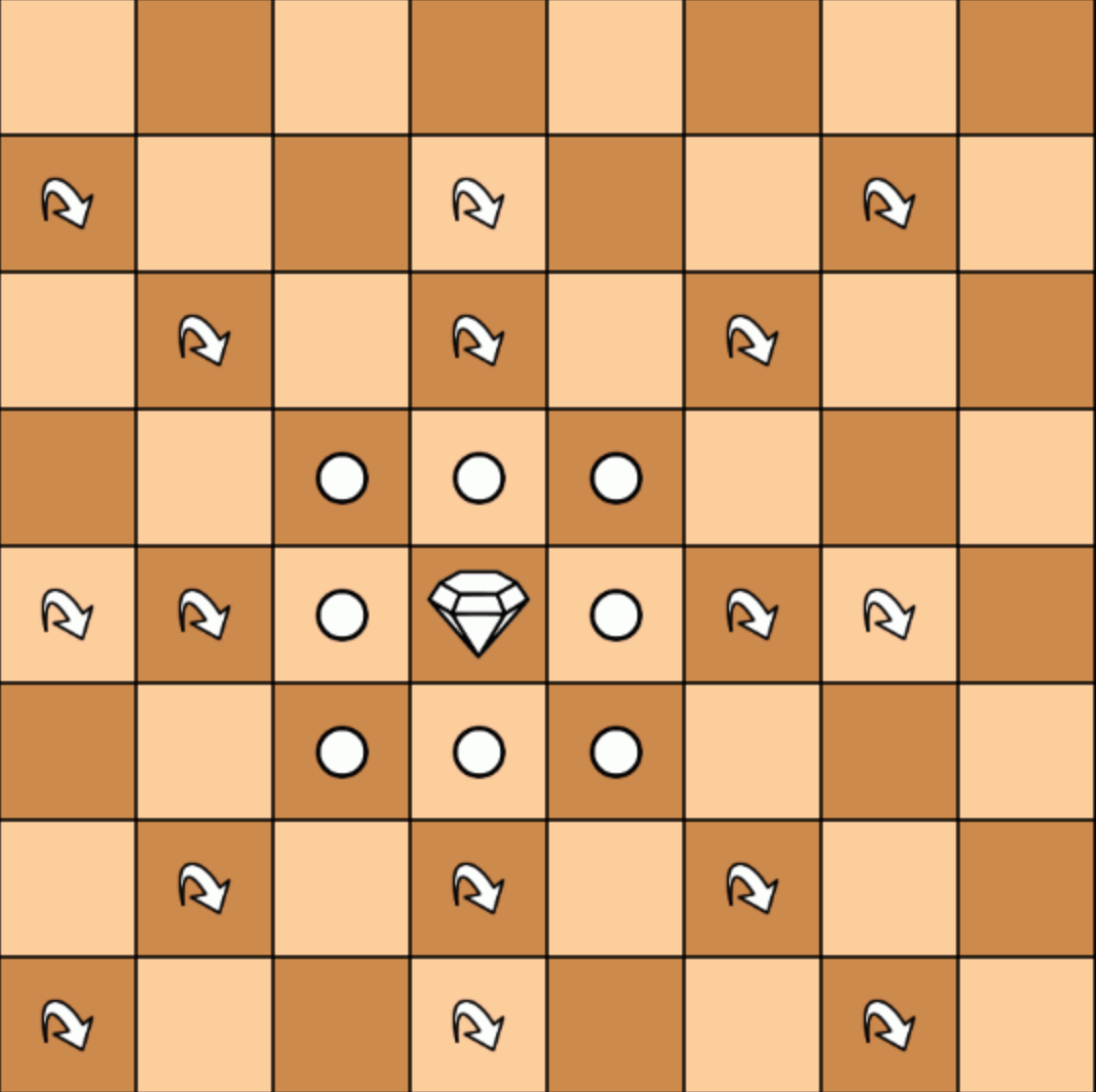

Troll: it makes a 3-step orthogonal or diagonal jump, no matter what any intermediate square contains. In addition, it moves 1 step forward and captures 1 step diagonally forward (like a Pawn). This permits the Troll to reach any square on the board. It can promote only when it moves like a Pawn, never by jumping 3 squares. It is used at Terachess (II) and Fantastic XIII.
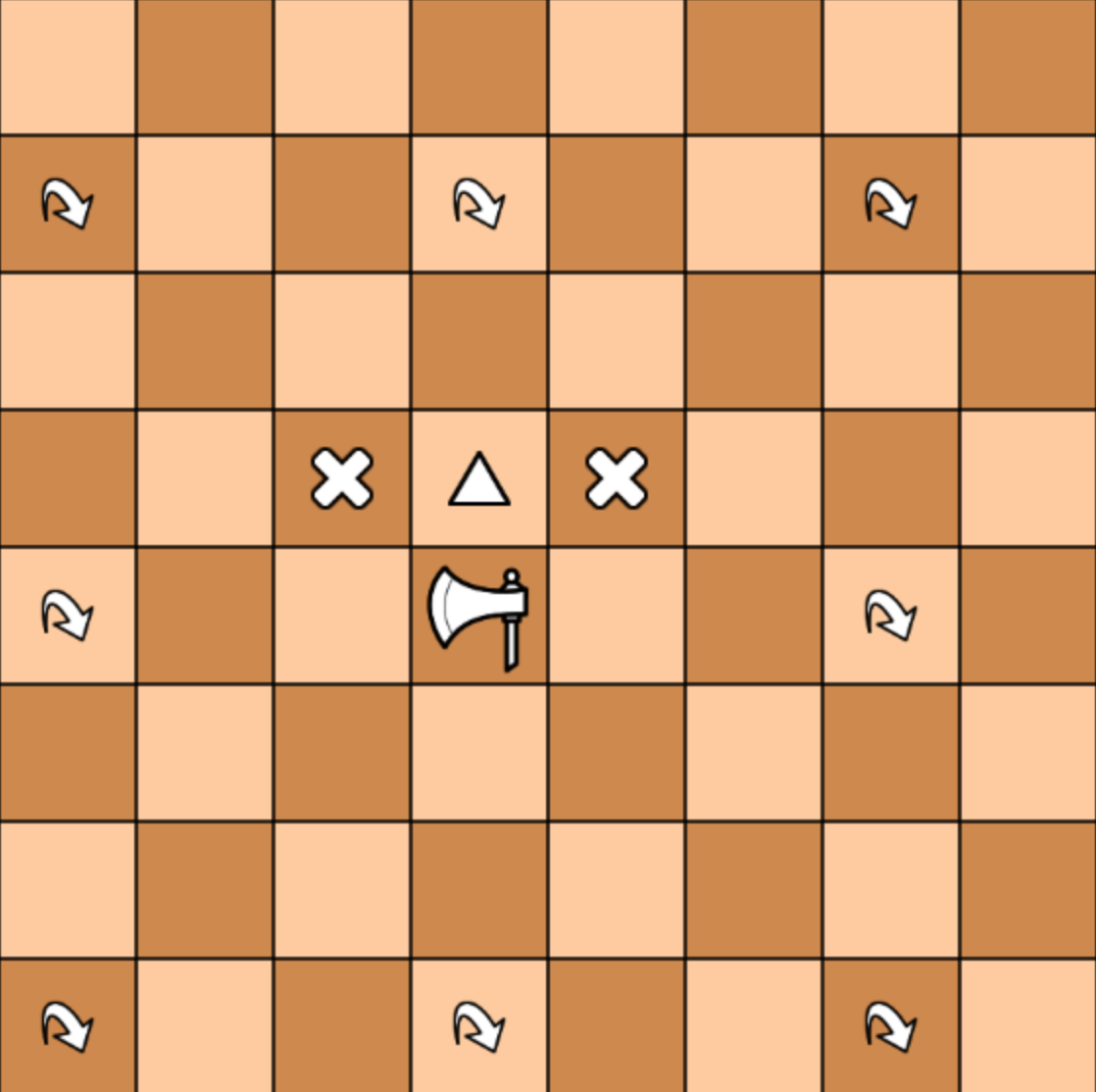

Snake: it moves one square vertically and then, slides away of an indefinite number of squares diagonally. It can not jump and the unobstructed path must start with the vertical movement. The Snake is the counterpart of the Ship. Both pieces are constrained bent-riders because the vertical direction is favored compare to the horizontal one in the definition of their moves. (The name of this piece comes obviously from its move in shape of snake's tongue, an idea inspired from Eric Silverman and Ralph Betza). Also used in Fantastic XIII.
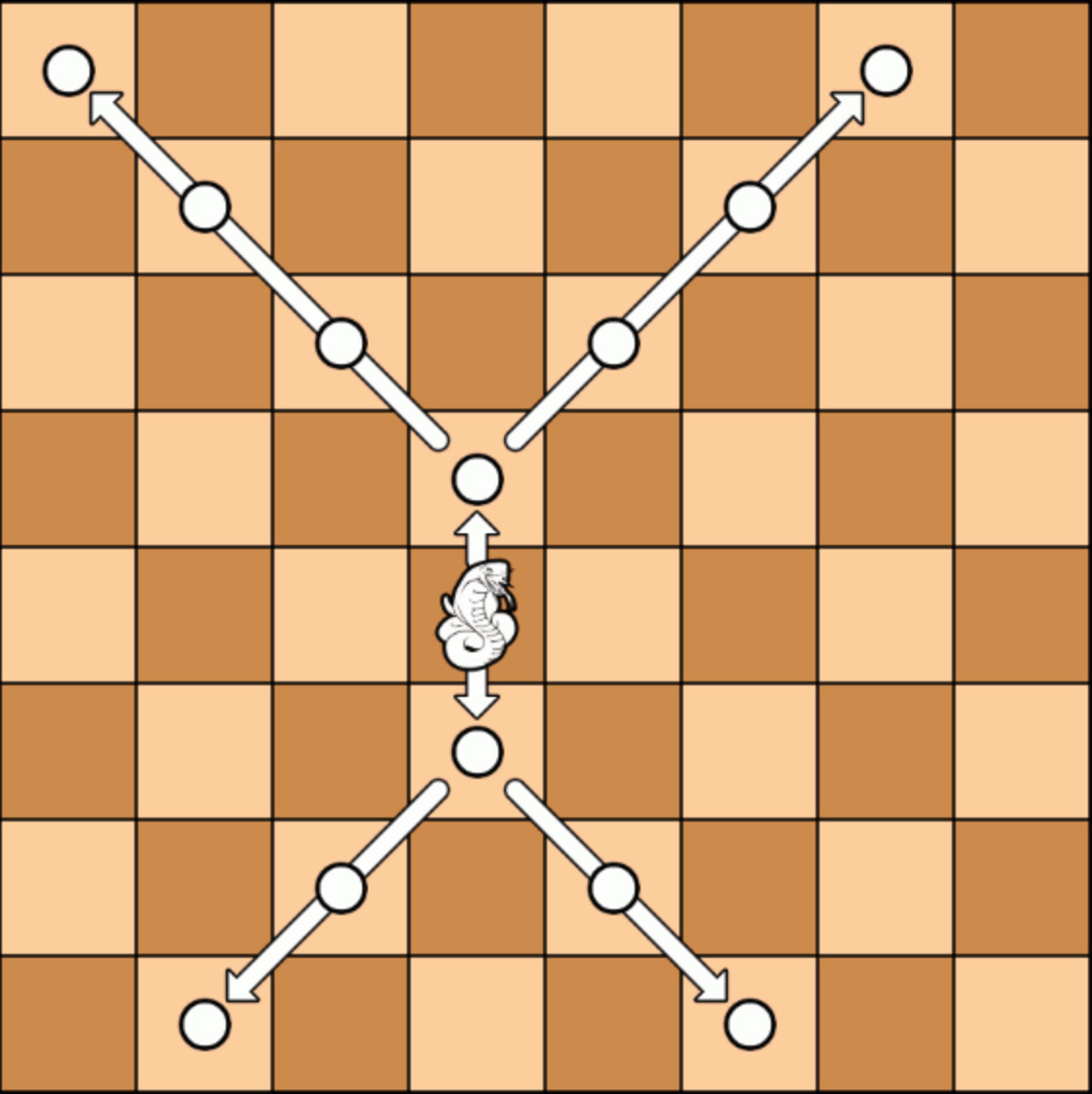

Ship: a piece also used in Tamerlane II. It moves one square diagonally and then, goes away of an indefinite number of cases vertically, never horizontally. It can move one square diagonally only. It can not jump and must begin its move with the diagonal step. The Ship is more limited than the Eagle (which can move horizontally, see below). Nevertheless its power is between the Rook and the Bishop. Also used in Tamerlane II and in Fantastic XIII.
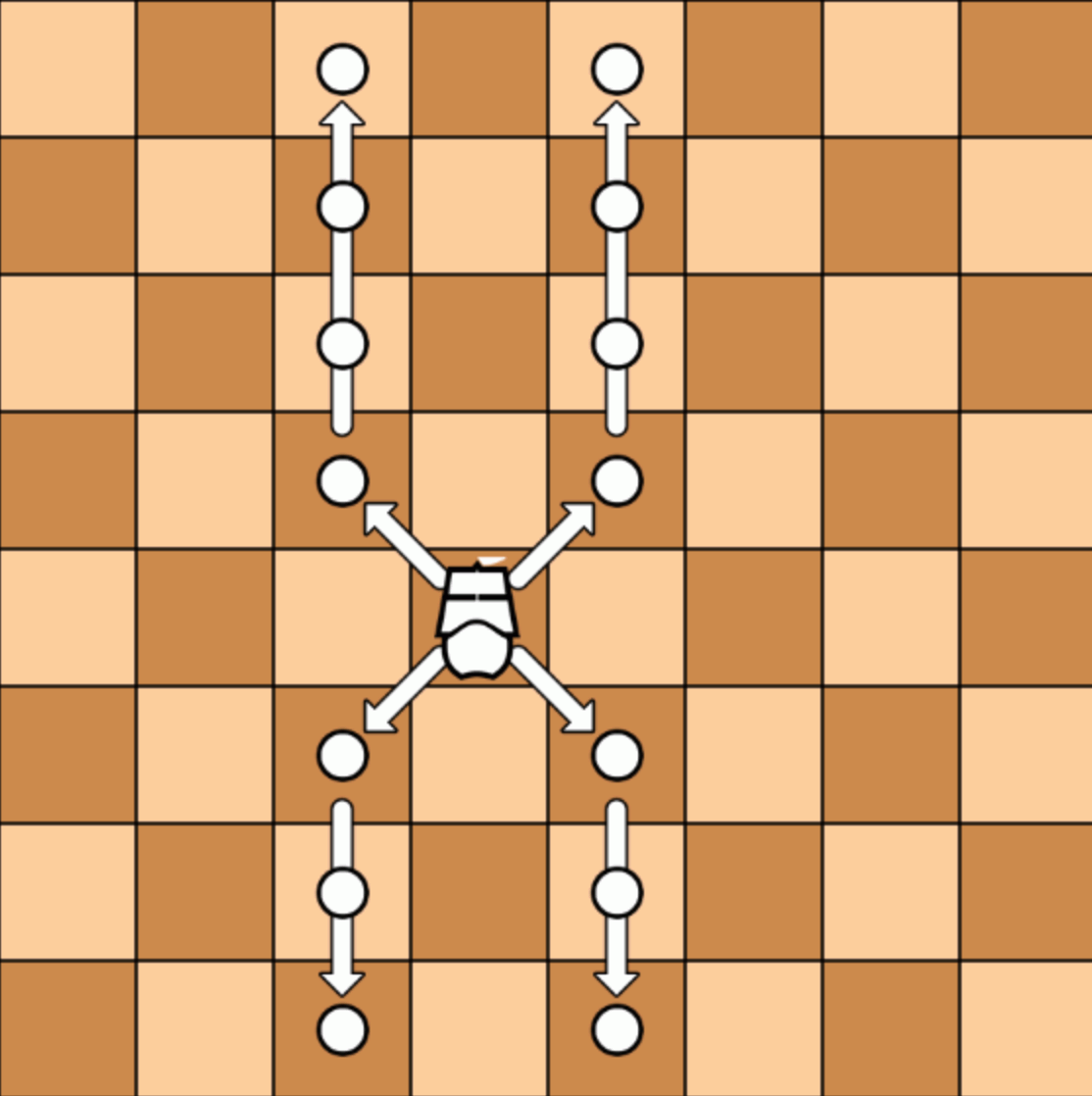

Hawk: it jumps horizontally, vertically or diagonally two or three squares, leaping over the intermediate squares if they are occupied. (A piece invented for Musketeer Chess). Also used in Fantastic XIII.
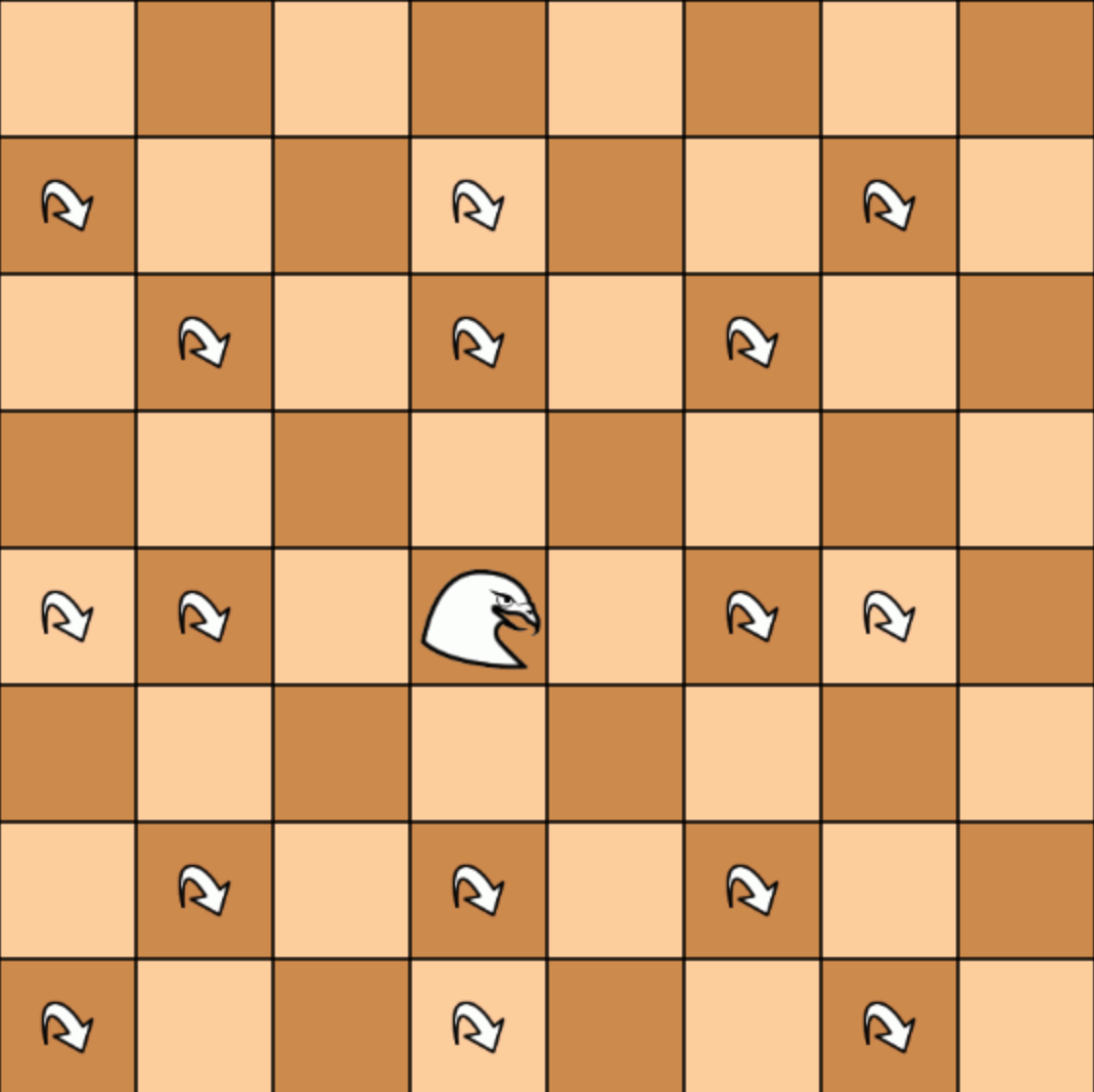

Mammoth: it steps horizontally, vertically or diagonally one or two squares, leaping over the intermediate square if it is occupied. (This piece was first proposed as a Pasha for Paulovits Game in the 1890s and was used as Mammoth or Mastodon by Mats Winther). It is the compound of the Elephant and the Machine. Also used in Fantastic XIII.
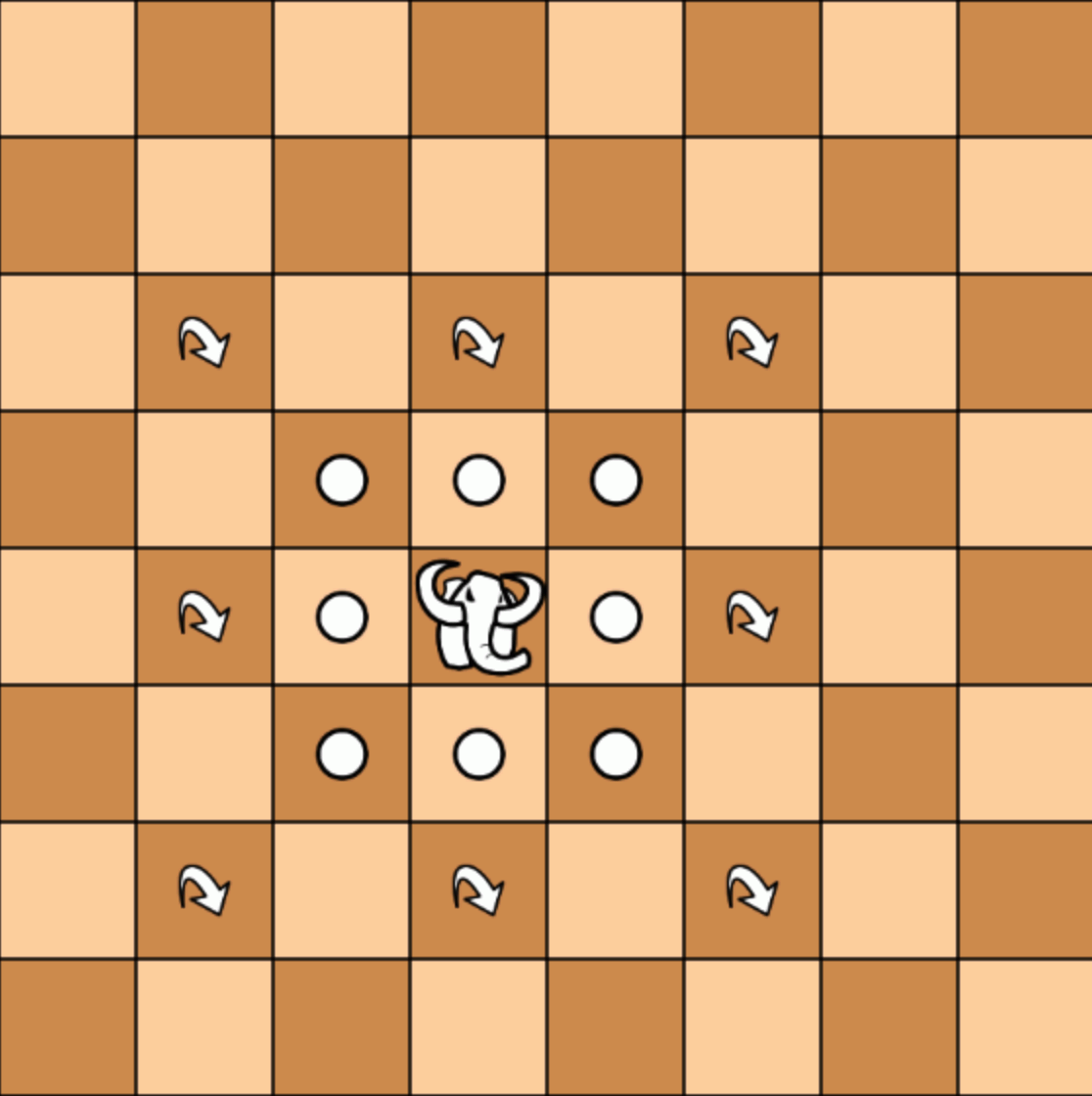

Squirrel: also a compound piece that jumps as a Knight or jumps at 2 squares, diagonally (like an Alfil) or orthogonally (like a Dabbaba). Also used in Fantastic XIII.
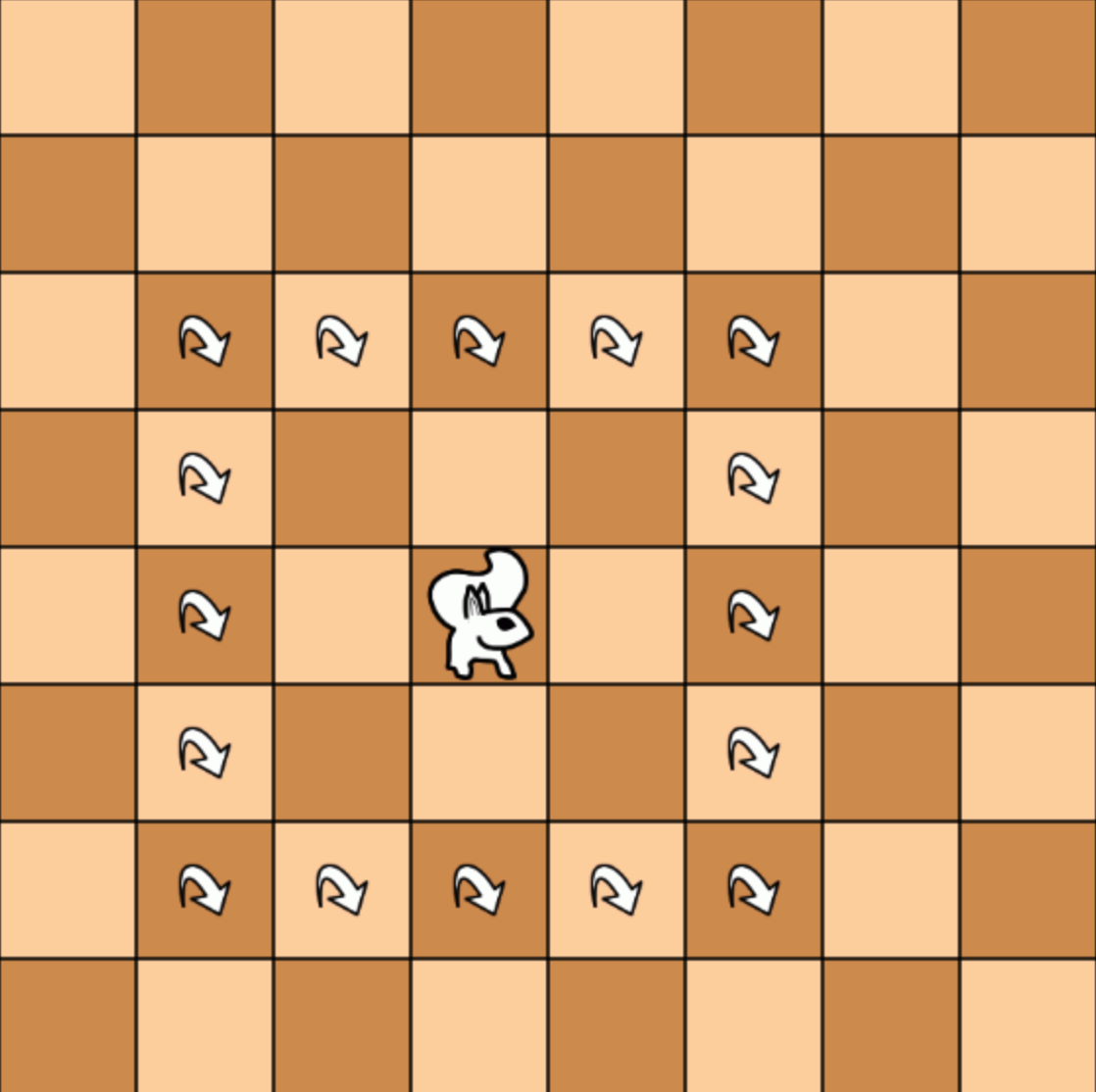

Cheetah: it is another "ring" leaper which jumps on any square situated at 3 squares distance from where it stands. (This piece was such named first by Eric Silverman). Also used in Fantastic XIII.
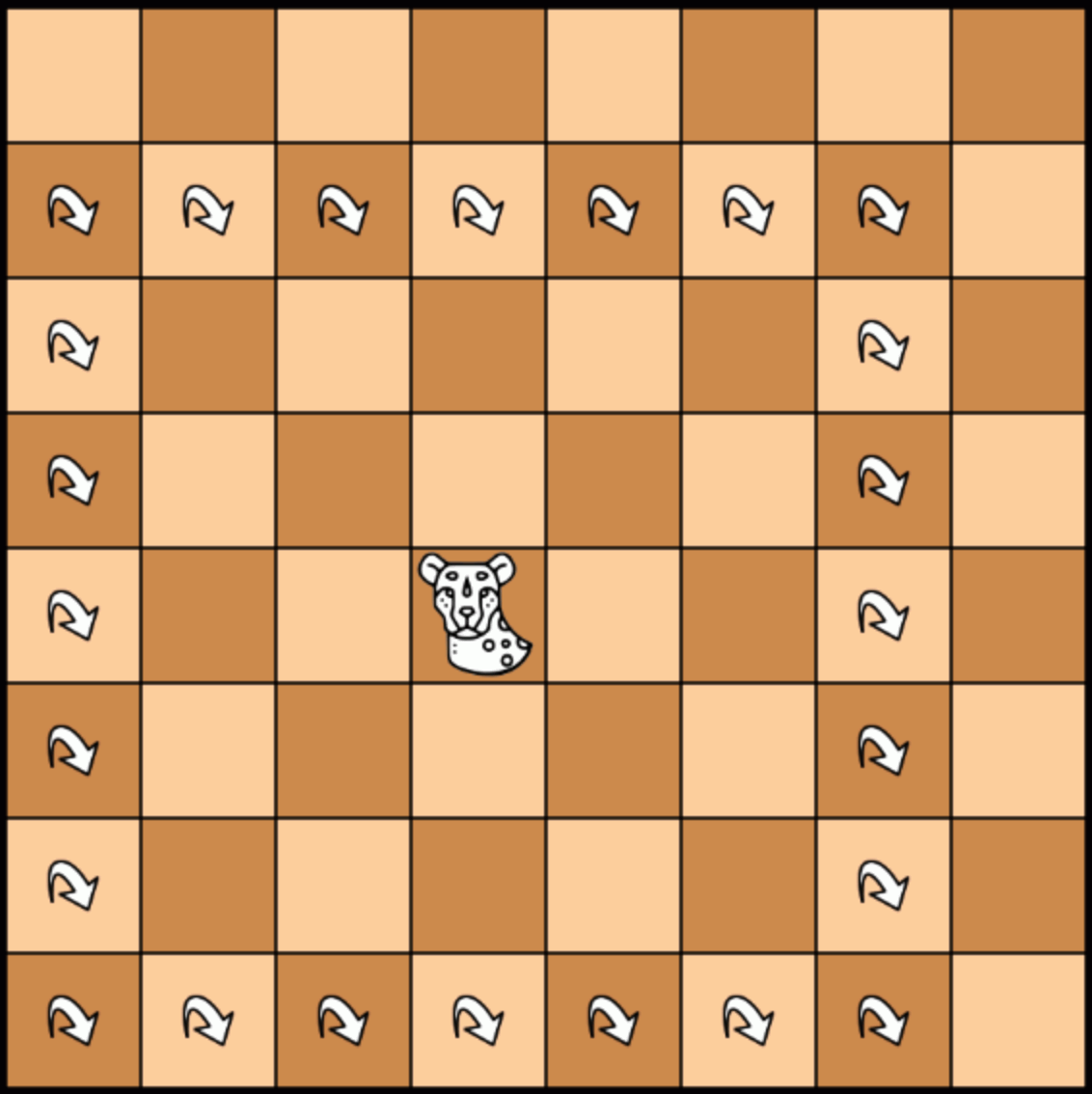

Direwolf: It jumps on any square situated at 2 or 3 squares distance from where it stands. The Direwolf is a “double-ring” leaper: it combines the powers of the Squirrel and the Cheetah, meaning that it can leap at any square at two or three-square distance from the square where it stands. Also used in Fantastic XIII.
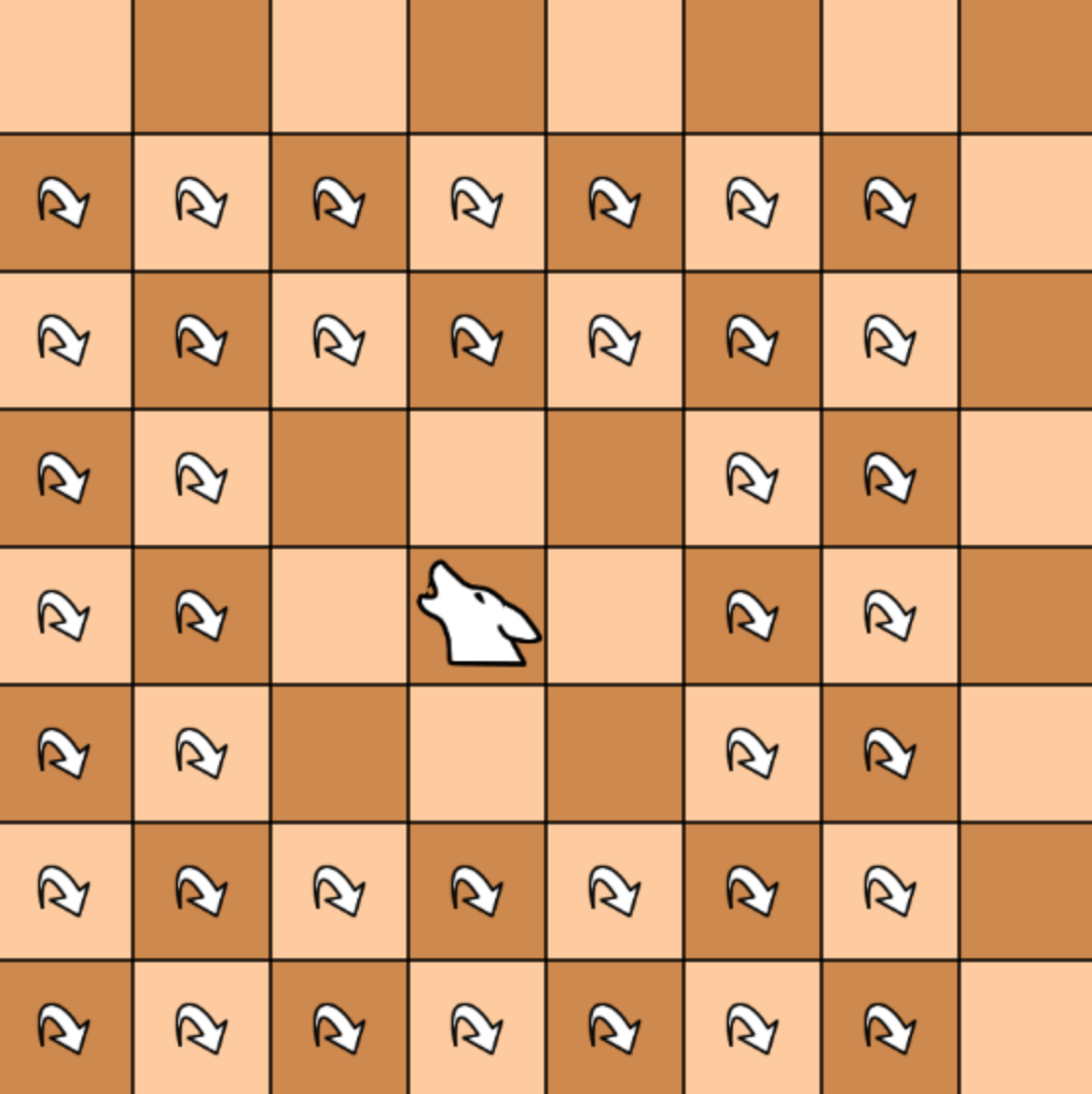

Rules
Several pieces can get a promotion at Bigorra when reaching the last rank of the board. Promotion is immediate, compulsory and cannot be refused.
- A Pawn is promoted to a Queen
- A Soldier is promoted to a Queen
- A Prince is promoted to an Amazon
- A Knight is promoted to a Buffalo
- A Camel is promoted to a Buffalo
- A Giraffe is promoted to a Buffalo
- An Elephant is promoted to a Lion
- A Machine is promoted to a Lion
- A Centaur is promoted to a Lion
- A Mammoth is promoted to a Lion
- A Squirrel is promoted to a Lion
- A Ship is promoted to an Eagle
- A Snake is promoted to a Rhinoceros
- A Hawk is promoted to a Duchess
- A Troll, when moving 1-step, is promoted to a Direwolf. The Troll does not promote when it reaches the opposite side by a 3 squares jump.
En Passant capture: Any time a Pawn, a Soldier or Prince takes a double step and passes through the capture square of an opposing Pawn or Soldier, that Pawn or Soldier may capture the Pawn, Soldier or Prince as if it had only moved one square. This en passant capture must be made in the move immediately following the double step. Only a Pawn or a Soldier may capture en passant; the Prince does not have this option.
End Of Game: The end-of-game rules, checkmate, stalemate, etc., are identical to standard chess.
Notes
This is the Interactive Diagram.
The photographied pieces are 3D printed pieces (with PLA), made from my own designs. I have tried to maintain some harmony between them, respecting a "Staunton" style and paying attention to their relative height and base diameter. A special attention has been made to their manufacturability. Those designs are available on Thingiverse.
 This 'user submitted' page is a collaboration between the posting user and the Chess Variant Pages. Registered contributors to the Chess Variant Pages have the ability to post their own works, subject to review and editing by the Chess Variant Pages Editorial Staff.
This 'user submitted' page is a collaboration between the posting user and the Chess Variant Pages. Registered contributors to the Chess Variant Pages have the ability to post their own works, subject to review and editing by the Chess Variant Pages Editorial Staff.
By Jean-Louis Cazaux.
Last revised by Jean-Louis Cazaux.
Web page created: 2023-07-20. Web page last updated: 2023-08-06
